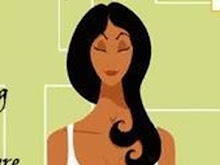A Yogic Perspective on Carpal Tunnel Syndrome with Timothy McCall M.D. (Yoga Journal Conference, San Francisco)
Some quick anatomy and action of the wrist:
8 carpal bones (2 rows of 4)
creases on the wrist radial carpal junction
tendons and medial nerve pass through carpal tunnel
neutral alignment is like shaking hands with the thumb up
palm face up supination
palm face down pronation
wrist bends forward and backward from the carpal bones
weight on the butt of hand can cause stress to carpal bones
(tingling and numbness at night when nerve is compromised)
The muscles on the outside of forearm used in flexion are sometimes hard and overdeveloped (over use or too much training).
Healthy muscles should be strong, but soft and supple.
Posture is a huge factor in carpal tunnel syndrome:
C-shape in back- bones are linked like a chain through the body. Every bone is a lever on the bone next to it. This is similar to thoracic outlet syndrome (anterior scalenes short, pec minor too tight, clavicles rolled down and forward)
(ie The man walking fast down the street trying to catch up to his head.)
Double crush - nerves pinched in wrist, forearm, shoulder, chest
Nerves go through muscles and if muscles are tight they can constrict the nerves.
Fascia is connected throughout the body.
In posture the arrows point both ways:
"posture of depression" or "posture creates depression"
Tensegrity - tension and integrity
In yoga we try to make things straight and in alignment, but no bones are really straight.
There are natural curves and arches like a geodesic dome that is indestructible.
The carpal tunnel is a dome or an arch.
Practicing with/preventing carpal tunnel syndrome:
Work the whole body and person, not just the injury or problem.
Press down to lift up. Focus on the upward pressure vs downward pressure.
Hasta Bandha (lifting from palm of hand) and Pada Bandha (lifting from arch of foot)
Allow your body to be open, bring ease, try easy, not hard.
In our poses we can effect locally what's happening distally in the body. Opening the chest can create freedom in the wrists.
Make sure you can breathe and feel free and open in your postures.
Direct alternative treatment options prior to surgery:
Deep tissue work to release the fascia, remember the chest, shoulders, and forearms.
Vitamin B6
Fresh Pineapple (2 cups daily)
8ft yoga strap to open chest and draw shoulders and clavicle into good postural balance
Subscribe to:
Post Comments (Atom)


No comments:
Post a Comment